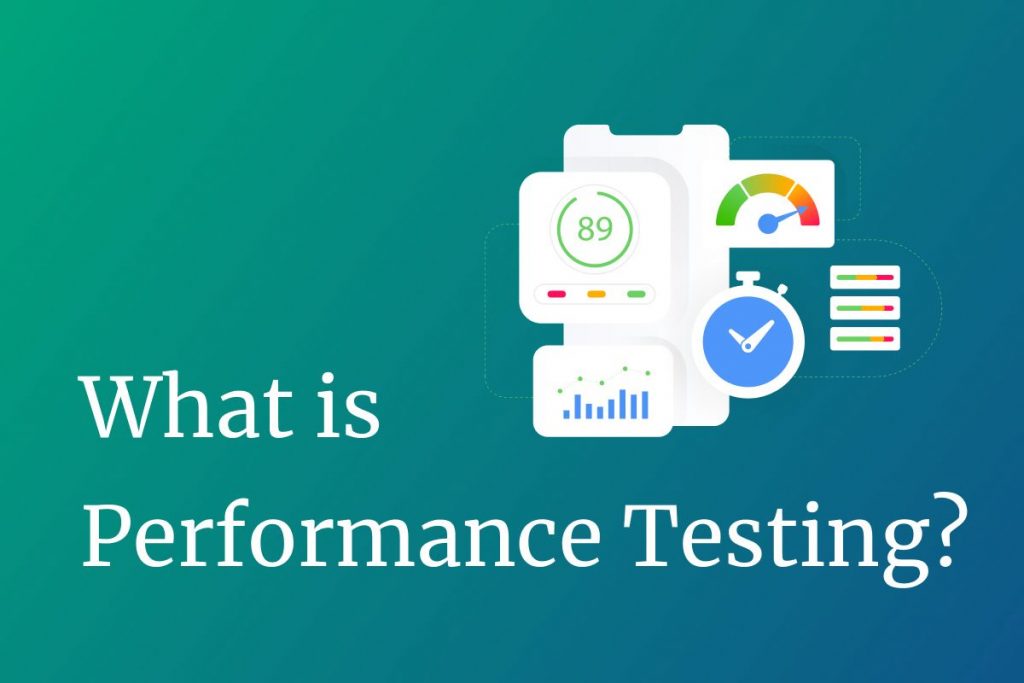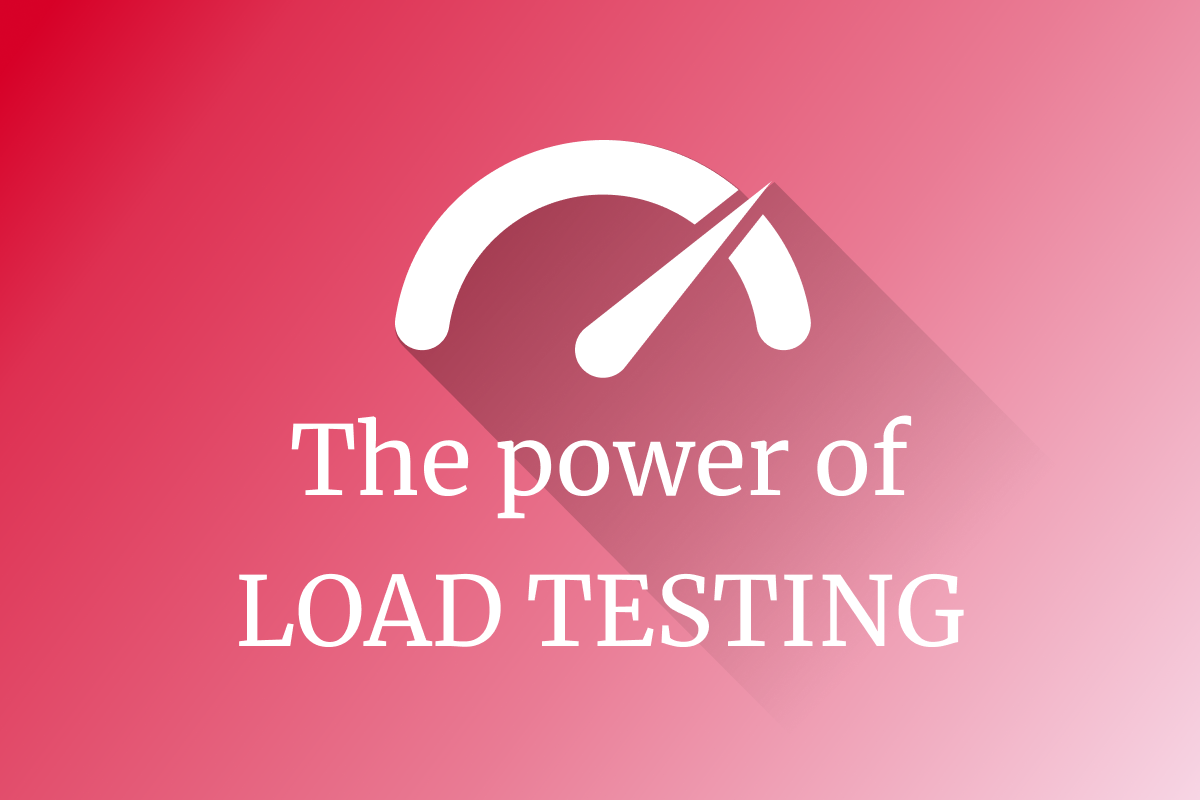When we think about software testing, functional testing often takes center stage, verifying that each feature works as intended. However, even if a system performs all its functions correctly, it can still fail in the real world if it crashes under heavy load, takes too long to respond, or becomes unstable over time. This is where non-functional testing becomes essential.
At SHIFT ASIA, we believe that non-functional testing is not just a supplementary step; it’s the foundation of building stable, high-performing, and trustworthy digital products.
What is Non-Functional Testing?
Your application passes every functional test. Features work as designed, buttons respond correctly, and data flows through the system without errors. Yet when you launch, users complain about slow load times, the system crashes under peak traffic, and security vulnerabilities emerge. This gap between “working software” and “excellent software” is where non-functional testing makes all the difference.
Non-functional testing is a software testing methodology that examines how well your application performs under various conditions. Unlike functional testing, which verifies what your system does, non-functional testing evaluates how well it does so – measuring critical attributes such as performance, security, reliability, scalability, and user experience.
For businesses operating in Southeast Asia’s rapidly growing digital economy, implementing comprehensive non-functional testing strategies ensures your software not only works but excels in real-world conditions. A slow-loading eCommerce platform can lose customers in seconds, while a security vulnerability can compromise an entire organization’s reputation overnight.
The 8 Essential Types of Non-Functional Testing
1. Performance Testing: Measuring Application Speed and Responsiveness
Performance testing evaluates how your application responds under specific workloads, measuring response times, throughput, and resource utilization to ensure your system meets performance benchmarks.
Real-world impact: An online banking application that takes 10 seconds to process a transaction will frustrate users and drive them to competitors. Performance testing identifies bottlenecks before they affect customers.
Key performance testing metrics:
- Application load time measurement
- Response time analysis
- Server resource consumption monitoring
- Database query optimization
- API endpoint performance
2. Load Testing: Validating System Capacity Under Expected Traffic
Load testing determines how your system behaves under expected user volumes. It simulates multiple users accessing your application simultaneously to verify that it can handle both normal and peak traffic conditions without degrading performance.
Real-world impact: During flash sales or promotional campaigns, eCommerce platforms experience traffic spikes of 5- 10x normal volume. Load testing ensures your infrastructure can support thousands of concurrent users without crashing or slowing down.
Critical load testing metrics:
- Concurrent user capacity limits
- Transaction processing rates
- System stability under sustained load
- Infrastructure resource allocation efficiency
- Response time degradation curves
3. Stress Testing: Finding Your System’s Breaking Point
Stress testing pushes your system beyond normal operational capacity to identify breaking points and recovery capabilities. It reveals how your application fails and whether it can recover gracefully under extreme conditions.
Real-world impact: When a viral marketing campaign unexpectedly drives 10x normal traffic to your website, stress testing ensures your system degrades gracefully rather than crashing completely, maintaining core functionality even under extreme pressure.
Critical stress testing evaluations:
- Maximum capacity thresholds
- Failure point identification
- System recovery mechanisms
- Data integrity under pressure
- Error handling effectiveness
4. Scalability Testing: Ensuring Growth-Ready Architecture
Scalability testing assesses your application’s ability to scale up or down in response to demand. It verifies whether adding resources (servers, memory, processors) improves performance in a proportional and cost-effective manner.
Real-world impact: As your SaaS platform grows from 1,000 to 100,000 users, scalability testing ensures your architecture can accommodate growth without requiring a complete system redesign or expensive infrastructure overhauls.
Key scalability testing considerations:
- Vertical scaling capabilities (hardware upgrades)
- Horizontal scaling effectiveness (adding servers)
- Database scalability and sharding
- Cloud resource optimization
- Auto-scaling configuration validation
5. Security Testing: Protecting Your Application from Vulnerabilities
Security testing identifies vulnerabilities, threats, and risks in your software system. It ensures data protection, secure authentication, authorization controls, and compliance with international security standards.
Real-world impact: A single data breach can cost millions in damages and irreparably harm your brand reputation. Security testing uncovers vulnerabilities like SQL injection, cross-site scripting (XSS), and weak encryption before attackers exploit them.
Essential security testing checks:
- Penetration testing and ethical hacking
- Vulnerability assessments and scanning
- Authentication and authorization verification
- Data encryption validation (at rest and in transit)
- Compliance testing (GDPR, PCI-DSS, ISO 27001, HIPAA)
- Session management security
- API security testing
6. Usability Testing: Optimizing User Experience
Usability testing evaluates how intuitive and user-friendly your application is. It measures how easily users can navigate, understand, and accomplish tasks within your system, directly impacting user satisfaction and conversion rates.
Real-world impact: A mobile banking app with confusing navigation will see higher abandonment rates and lower customer satisfaction scores. Usability testing identifies friction points that prevent users from completing critical actions, such as fund transfers or bill payments.
Usability testing evaluation criteria:
- User interface intuitiveness and clarity
- Navigation efficiency and logic
- Accessibility compliance (WCAG guidelines)
- Learning curve assessment
- User satisfaction metrics (NPS, CSAT)
- Task completion rates
- Error recovery ease
7. Compatibility Testing: Ensuring Cross-Platform Functionality
Compatibility testing verifies your application functions correctly across different devices, browsers, operating systems, screen sizes, and network environments; it is essential for reaching diverse user bases.
Real-world impact: With users accessing applications from diverse devices, from budget Android phones to premium iOS devices, compatibility testing ensures consistent experiences. An e-learning platform that crashes on certain browsers excludes potential users and damages credibility.
Comprehensive compatibility testing scope:
- Browser compatibility (Chrome, Firefox, Safari, Edge, Opera)
- Operating system variations (Windows, macOS, Linux, iOS, Android)
- Device types (desktop, tablet, mobile, smart TV)
- Network conditions (3G, 4G, 5G, Wi-Fi, offline mode)
- Screen resolutions and orientations
- Hardware compatibility (processors, memory configurations)
8. Reliability Testing: Measuring Long-Term System Stability
Reliability testing measures your system’s ability to perform consistently over extended periods without failures. It assesses mean time between failures (MTBF), mean time to repair (MTTR), and system availability metrics.
Real-world impact: Enterprise resource planning (ERP) systems running 24/7 must maintain continuous operations. Reliability testing identifies memory leaks, resource exhaustion, and performance degradation issues that emerge only after prolonged use.
Critical reliability testing metrics:
- System uptime percentage (SLA compliance)
- Failure frequency analysis
- Recovery time measurement (RTO/RPO)
- Data consistency verification
- Long-term performance stability
- Failover and disaster recovery validation
Key Performance Metrics
Effective non-functional testing requires tracking specific, measurable KPIs that directly impact user experience and business outcomes:
Response Time Benchmarks:
- Page load time: < 3 seconds for optimal user retention (53% of users abandon slower sites)
- API response time: < 200ms for seamless experiences
- Time to first byte (TTFB): < 600ms for perceived speed
- Time to interact (TTI): < 5 seconds for engagement
Throughput and Capacity Metrics:
- Transactions per second (TPS)
- Requests per second (RPS)
- Data transfer rates (MB/s)
- Concurrent user capacity
Resource Utilization Standards:
- CPU usage: < 70% under normal load
- Memory consumption: monitored for leaks and bloat
- Disk I/O performance benchmarks
- Network bandwidth utilization
Security Testing Metrics:
- Vulnerability count by severity (Critical, High, Medium, Low)
- Time to detect and patch vulnerabilities
- Authentication success/failure rates
- Encryption strength validation
Why Non-Functional Testing is Critical for Business Success
The cost of neglecting non-functional testing extends far beyond technical issues; it directly impacts revenue, brand reputation, and competitive positioning.
The Business Cost of Poor Performance
Revenue and Conversion Impact:
- Amazon found that every 100ms of latency costs them 1% in sales
- Google reports that 53% of mobile users abandon sites that take longer than 3 seconds to load
- A 1-second delay in page response can result in a 7% reduction in conversions
- Poor performance during peak traffic can result in millions of lost revenue
User Abandonment Statistics:
- 79% of online shoppers who experience poor performance won’t return to the site
- 44% of users will tell friends about a poor experience
- Mobile users are 5x more likely to abandon a task if the site isn’t optimized
- 88% of online consumers are less likely to return after a bad user experience
Security Breach Consequences:
- Average cost of a data breach: $4.45 million (IBM Security Report)
- 60% of small businesses close within 6 months of a cyber attack
- Stock prices typically drop 7.5% after a breach announcement
- Legal and regulatory fines can reach tens of millions
Competitive Disadvantage:
- Users quickly switch to better-performing alternatives
- Poor reviews and ratings damage organic discovery
- Technical issues erode brand trust and loyalty
- Recovery from reputation damage takes years
Long-Term Benefits of Comprehensive Non-Functional Testing
1. Sustainable Business Growth
Applications tested for scalability and performance can:
- Accommodate business expansion without emergency refactoring
- Handle seasonal traffic spikes without additional infrastructure costs
- Support new feature releases without degrading performance
- Scale efficiently as the user base grows
- Reduce technical debt accumulation
2. Proactive Risk Mitigation
Comprehensive testing prevents:
- Costly security breaches and data loss incidents
- Downtime during critical business periods
- Emergency fixes and hot patches in production
- Negative PR and reputation damage
- Regulatory fines and compliance violations
3. Superior User Experience and Retention
Performance and usability optimization drives:
- Higher user engagement and session duration
- Improved conversion rates and revenue per user
- Positive reviews and organic growth
- Lower customer acquisition costs
- Increased customer lifetime value (CLV)
4. Reduced Total Cost of Ownership
Early testing identification reduces costs:
- Finding bugs in development is 10-100x cheaper than in production
- Preventing performance issues reduces infrastructure costs
- Avoiding security breaches eliminates incident response expenses
- Reducing technical debt lowers long-term maintenance costs
- Optimizing resource usage decreases cloud computing bills
5. Competitive Market Advantage
When functional features are similar across competitors:
- Superior performance becomes a key differentiator
- Better reliability builds customer trust
- Enhanced security demonstrates professionalism
- Excellent UX increases word-of-mouth referrals
- Technical excellence attracts enterprise clients
6. Regulatory Compliance and Market Access
Many industries and regions require:
- Specific security standards (PCI-DSS, SOC 2)
- Accessibility compliance (WCAG, ADA)
- Data protection regulations (GDPR, PDPA)
- Industry-specific certifications
- Reliability and uptime guarantees
SHIFT ASIA’s Non-Functional Testing Services
At SHIFT ASIA, we deliver comprehensive non-functional testing services that ensure your applications exceed performance, security, and usability standards. Our proven methodology combines specialized expertise, advanced testing tools, and deep industry knowledge across Southeast Asian markets.
Our 5-Step Non-Functional Testing Methodology
Step 1: Requirement Analysis and Test Planning
We begin by thoroughly understanding your business objectives, user expectations, and technical constraints. Our QA consultants collaborate with stakeholders to:
- Define realistic performance benchmarks aligned with business goals
- Identify security requirements and compliance standards
- Establish quality metrics and acceptance criteria
- Create comprehensive test strategies tailored to your industry
- Assess risk areas requiring focused testing attention
Step 2: Test Environment Configuration
We create realistic testing environments that accurately mirror production conditions:
- Infrastructure configuration matching your deployment architecture
- Representative data volumes and complexity for accurate results
- Diverse device and browser combinations for compatibility testing
- Network condition simulations (latency, bandwidth variations, packet loss)
- Load generation infrastructure for performance testing
- Security testing sandboxes are isolated from production
Step 3: Comprehensive Test Execution
Our experienced QA engineers execute multi-layered testing strategies:
- Automated performance testing using industry-leading tools
- Manual exploratory testing for usability and edge cases
- Security assessments following the OWASP Top 10 guidelines
- Continuous monitoring and real-time performance analysis
- Parallel testing across multiple environments
- Regression testing to ensure optimization doesn’t break functionality
Step 4: Detailed Reporting and Root Cause Analysis
We provide actionable insights through comprehensive documentation:
- Detailed test reports with clear metrics and data visualizations
- Root cause analysis for identified performance bottlenecks
- Prioritized recommendations for optimization
- Comparative analysis against industry benchmarks
- Executive summaries for stakeholder communication
- Video evidence and screenshots for usability issues
Step 5: Continuous Improvement and Monitoring
Non-functional testing is an ongoing process. We establish:
- Performance monitoring dashboards for production environments
- Automated regression testing pipelines in CI/CD
- Regular security assessments and vulnerability scanning
- Scalability planning for anticipated growth
- Knowledge transfer and team training
- Long-term QA partnership and support
Advanced Testing Tools and Technologies
SHIFT ASIA leverages cutting-edge testing platforms to deliver superior results:
Performance and Load Testing Tools:
- Apache JMeter for distributed load testing
- Gatling for high-performance scenario simulation
- LoadRunner for enterprise-grade performance testing
- K6 for developer-centric load testing
- New Relic and Dynatrace for application performance monitoring (APM)
- Grafana and Prometheus for metrics visualization
Security Testing Solutions:
- Burp Suite Professional for comprehensive vulnerability assessment
- OWASP ZAP for automated web application security scanning
- Nessus for infrastructure security scanning
- Metasploit for penetration testing
- Acunetix for SQL injection and XSS detection
- Qualys for continuous security monitoring
Compatibility and Cross-Browser Testing:
- BrowserStack for real-device cross-browser testing
- Sauce Labs for mobile and desktop compatibility
- AWS Device Farm for testing on actual devices
- LambdaTest for parallel browser testing
- CrossBrowserTesting for visual regression testing
Test Automation Frameworks:
- Selenium WebDriver for web application automation
- Appium for native mobile automation
- Cypress for modern web testing
- Playwright for cross-browser automation
- Custom frameworks tailored to client requirements
Monitoring and Analytics:
- Google Lighthouse for performance audits
- GTmetrix for website speed analysis
- Pingdom for uptime monitoring
- Datadog for infrastructure monitoring
- Sentry for error tracking and reporting
Why Choose SHIFT ASIA for Non-Functional Testing
SHIFT ASIA stands out as a leading choice for non-functional testing due to its regional expertise in Southeast Asia. The team possesses a deep understanding of the market dynamics specific to this region, which includes diverse network conditions across countries, a wide range of device ecosystems from budget to premium, and multi-language and localization requirements. They also ensure smooth regional payment method integrations and adhere to local regulatory and compliance standards.
The organization upholds Japanese quality standards inherited from its parent company, SHIFT Inc., emphasizing rigorous quality assurance processes, meticulous attention to detail, and a culture of continuous improvement. Comprehensive documentation standards and a long-term partnership approach further enhance their service delivery.
With access to over 500 skilled QA professionals, SHIFT ASIA can rapidly scale its resources to meet varying project demands, catering to both startups and large enterprises. They provide 24/7 testing coverage across multiple time zones and can deliver multilingual testing services while adapting to agile or waterfall methodologies.
Their proven track record includes successfully delivering non-functional testing services to more than 100 clients in Southeast Asia, including major e-commerce platforms handling millions of transactions, financial institutions with stringent security requirements, healthcare systems requiring 99.99% uptime, and gaming companies accommodating millions of concurrent users.
In terms of cost-effectiveness, SHIFT ASIA offers competitive pricing alongside flexible engagement models, such as project-based testing for specific initiatives, dedicated QA team augmentation, and managed testing services for ongoing needs. They also specialize in test automation development and maintenance, as well as QA consulting and strategy development.
Moreover, SHIFT ASIA offers a comprehensive service portfolio beyond non-functional testing, including functional testing and test automation, mobile app testing for iOS and Android, API and web services testing, DevOps and CI/CD integration, and quality assurance consulting and test strategy planning.
Start Your Non-Functional Testing Journey
Whether you’re launching a new application, scaling an existing platform, or ensuring your systems meet enterprise-grade standards, comprehensive non-functional testing provides the foundation for sustainable success.
At SHIFT ASIA, we combine Japanese quality standards with Southeast Asian market expertise to deliver comprehensive non-functional testing services. Our holistic approach ensures your applications perform flawlessly under any conditions, from peak traffic surges to sophisticated security threats.
Our Testing Services Include:
✓ Performance and load testing ✓ Security and penetration testing
✓ Scalability and reliability testing ✓ Compatibility and cross-platform testing ✓ Usability and accessibility testing ✓ Test automation development ✓ Continuous testing in DevOps pipelines ✓ QA consulting and strategy
Ready to elevate your application’s quality and ensure exceptional user experiences? Our testing experts are prepared to discuss your specific requirements and design a customized testing strategy.
Don’t let performance issues, security vulnerabilities, or usability problems undermine your success. Partner with SHIFT ASIA and build software that exceeds expectations.
ContactContact
Stay in touch with Us




